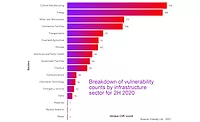Manufacturing News
Got water? At what risk?
The Water Risk Monetizer, a publicly available financial modeling tool, has just been released with a new revenue-at-risk assessment program. The web-based tool, co-produced by Ecolab and Trucost with aid from their partner, World Resources Institute (WRI), was first introduced in November 2014 to help manufacturers and all water users get a truer picture of their water risks—present and future. The tool is free for all companies that would like to make more informed, responsible water use decisions. It runs on a secure site, is password protected and assures only the user has access to the provided information.
In its expanded form, the tool helps companies address the impact of water scarcity on their ability to operate, generate profit and grow. Not only can the tool be used to address an existing site or facility’s water issues, it also can help users assess potential water issues in making a greenfield site selection anywhere in the world or expanding a facility on an existing site, says Emilio Tenuta, Ecolab VP of corporate sustainability.
The premises of the Water Risk Monetizer in its latest revision are two-fold:
- Water scarcity has the potential to increase the cost of water, which makes operations more expensive and reduces profit margins.
- Water scarcity limits availability, making it more difficult to assess water as a business needs to operate.
While the tool requires user input about water usage and charges, it takes more than just this information for the user get a handle on the financial impacts of water scarcity and/or future trends at a specific site location. “The scientific model includes a number of publicly available data sources in the algorithms, one of which is the WRI Aqueduct tool,” says Tenuta. “This tool references 20,000-plus watersheds around the world to provide us the basis for water scarcity stress in a specific area.”
WRI’s data provides information about an area’s surface water and shallow ground water. Not every region is covered in the same detail in the WRI database, so the Water Risk Monetizer will serve some regions better than others, according to Tenuta.
While some areas, such as California, have been historically water scarce, others have experienced short-lived droughts. Getting the tool to “see” the difference has been difficult, but the latest version overcomes this challenge.
“Places like São Paulo, Brazil, where they’ve been in a drought for just under two years, have not been historically in a water-scarce area,” adds Tenuta. “Extreme weather conditions have led to drought in these areas. We’ve built into the tool a new feature we call a drought scenario.”
This feature allows a business to understand water scarcity risk related to increased operating costs in a scenario that considers drought conditions in a local water basin. “All a user has to do is [select the] drought scenario box next to the city he or she is in, and the system will indicate the drought condition and provide a scenario that helps the user understand the risks associated with the drought.”
In essence, the feature provides an estimate of the full value of water at a specific facility based on local water scarcity. “It enables businesses to substantiate an investment,” notes Tenuta. For example, it can help a processor make an informed decision about reusing and recycling water by comparing fresh water costs with the costs of reusing water in areas where the climate has been changing.
Developing effective water management strategies can be hindered by two major factors. First, water is often not priced to reflect its full value. Therefore, many companies don’t factor potential cost implications associated with water scarcity into business decisions. Second, companies rely on water and often take its availability for granted, assuming necessary water supplies will be available in the future.
The Water Risk Monetizer tool assesses the potential cost or impact of water risks by providing:
- Risk-adjusted water cost: a monetary estimate of the full value of water at a facility level, based on what water would cost if supply and demand were accurately reflected.
- Potential revenue at risk: the estimated amount and likelihood of lost revenue at a facility due to the impact of water scarcity on operations.
Processors like Mondelez, General Mills and Marriott offered input for the building and shaping of the tool, says Tenuta. Users can log onto the site at www.waterriskmonetizer.com.
Looking for a reprint of this article?
From high-res PDFs to custom plaques, order your copy today!



